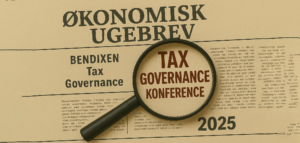Den tekniske ekspertgruppe (TEG), som blev udnævnt af Europa-Kommissionen sidste år for at rådgive den om sine omfattende ESG-fokuserede politiske reformer (Sustainable Finance), har sagt, at den nuværende grønne taksonomi kun vil blive “fuldt ud realiseret”, hvis den også definerer miljøskadelige forretningsaktiviteter, skriver mediet Responsible Investor.
The group, made up of 35 members and more than 100 advisors and observers from the financial markets, industry, science and civil society, released its long-awaited final report on the taxonomy today.
That advice, laid out in a 600-page document with a 67-page accompanying summary, will form the basis for how the European Commission chooses to finalise the framework.
The taxonomy was first proposed by the Commission in 2018. It seeks to identify business activities that are aligned with the EU’s environmental objectives, with a focus on climate change. A new law will require large companies and investors in the EU to disclose how they align with the taxonomy, and it is the basis for an EU Green Bond Standard and a number of other financial products and potential regulatory interventions in coming years.
The final report by the TEG – whose role is to provide technical details on what the taxonomy should look like – outlines ‘climate mitigation’ criteria and thresholds for 70 sectors, which are responsible for more than 90% of Europe’s emissions. 68 of those sectors now include climate adaptation criteria, too. If an investment or financial product aligns with these criteria, it can be called “environmentally sustainable”, according to a statement from the TEG issued today.
TEG‘s initial report outlining the criteria was released last year. Since then, revisions have been made to building, forestry and manufacturing activities on the back of technical feedback from industry, science and finance, according to the statement.
One of the recurring pieces of feedback that the Commission has received throughout the process is that limiting the taxonomy to ’green’ activities will not be effective in making financial markets Paris-aligned, because it doesn’t encourage a move away from those that undermine the climate agreement. There have been frequent calls for a taxonomy that includes environmentally harmful activities, too, nicknamed the ’brown taxonomy’.
When the Commission first posited a green taxonomy, it was suggested that it could be used as the basis for amendments to capital requirements in order to encourage banks to lend to eligible green companies. This concept – known as a green supporting factor – is still being considered by the Commission.
A ’brown’ taxonomy would conversely pave the way for tougher capital requirements for environmentally harmful activities, known as a brown penalising factor.
The latter has been favoured by a number of central banks, prudential bodies and NGOs that argue that ’brown’ activities are a potential indicator of risk, and therefore more relevant to capital requirements and other regulatory intervention than green. However, pushback from financial institutions and industry, who prefer to stick to positive ’green’ financial activity, contributed to the idea being put on the back burner.
However, during the political negotiations between the European Parliament, Council and Commission at the end of last year, the legal framework for the taxonomy was updated to include the possibility of extending the taxonomy to cover ’brown’ activities.
In its final report, the TEG said it “welcomes the decision to study the future so-called ‘brown’ taxonomy criteria”.
“Emissions levels in some economic activities are currently too high and threaten to continue to be too high throughout the economic transition to be consistent with Europe’s emissions-reduction goals. Developing criteria for significantly harmful emission levels will help investors, companies, issuers and project promoters to understand the necessary speed and depth of the transition task ahead,” it added.
“Incorporating ‘brown’ criteria into the taxonomy will greatly assist companies and other issuers in explaining incremental improvements in their activities and receiving some positive recognition in the market,” the report continues, pointing out that – in part because of an absence of standards – current practice is often to label incremental environmental improvements as ‘green‘, rather than simply ‘less brown‘.
“The TEG’s view is that this is not a robust approach for demonstrating that even modest climate change mitigation and adaptation objectives have been met… Incremental improvements can be positive and may be captured in other sustainability reporting requirements, but they are not considered aligned for the taxonomy. Identifying an environmentally harmful economic activity as partially green carries significant risks, such as leading the market to believe that any performance improvement is good enough even if the underlying activity and its potential performance is ultimately inconsistent with environmental goals over the medium to long term.
“Despite the risks, providing incentives for investments that reduce environmental harm is still important for achieving environmental goals and is an important objective for the Taxonomy design. This is where so-called ‘brown’ taxonomy criteria can play an important role.”
The TEG‘s ambition is that the taxonomy would ultimately comprise three performance levels: “substantial contribution” [green], “significant harm” [brown] and a category for those activities that do neither.
Notably, it calls for a “different word to ‘brown’” to describe environmentally harmful activities, and warns that, if taxonomies “are to be harmonised internationally, the terms used will need to appropriate to different cultural contexts”. It suggests at one point in the report that the term “red” could be used, to denote harmfulness.






